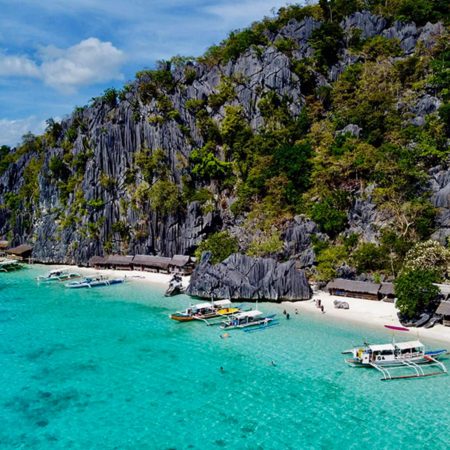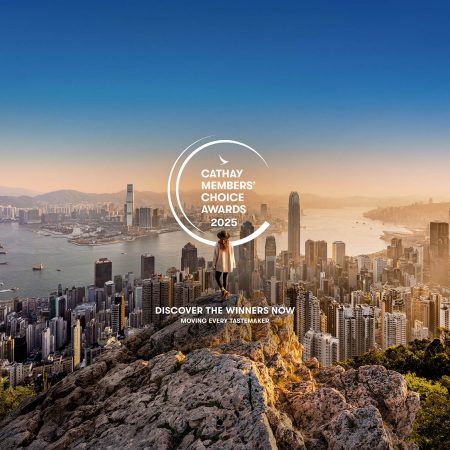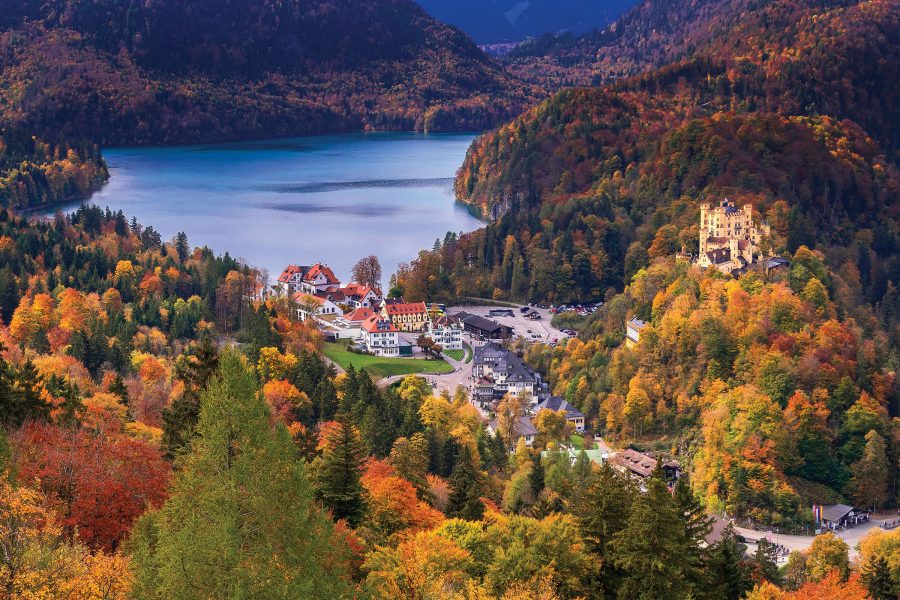There are few images that define Bavaria better than its famed schlosser – those fairytale castles that adorn its picture-postcard landscape and charming cities. The German state is also home to more than 40 thermal spas, as well as outstanding regional cuisine and celebrated breweries – not to mention the world-famous annual Oktoberfest beer festival from late September to early October.

Credit: Orbon Alija/Getty Images

Credit: FooTToo/Getty Images
During the summer months, the alpine foothills are a must-visit thanks to the fresh air, cool lakes, lush greenery and wide range of outdoor activities. Start in Munich and explore everything the capital city has to offer before heading up to the mountains to experience the great outdoors.
From what to see and do to where to stay and eat, we’ve got you covered for a true Bavarian adventure.

Credit: Severin Schweiger

Credit: Severin Schweiger

Credit: Claus Rammel
Where to start
As well as being the state capital, Munich is also the cultural heart of Bavaria. To get your bearings, start with a stroll around the old town before heading to the Kunstareal (art district) between Konigsplatz and Theresienstrasse. The big hitters here include the Alte Pinakothek, which features works by master painters Albrecht Durer, Raphael, Rubens and Rembrandt, and the State Museum of Egyptian Art, which covers 5,000 years of ancient Egyptian culture. Farther out, you’ll find the magnificent Schloss Nymphenburg , a 17th-century royal summer residence. Enter the lavish interior of this Baroque palace to learn more about its history or simply stroll around its expansive park.

Credit: Bayerische Schlösserverwaltung
Summers are hot in Bavaria, so do as the locals do and head to the lawns of Englischer Garten, dip your toes in the River Isar or join a communal table at one of Munich's many beer gardens. Popular spots include Hirschgarten , which can accommodate up to 8,000 people, or the Hofbraukeller am Weiner Platz in the laid-back neighbourhood of Haidhausen.


Credit: Goldenes Zimmer

Credit: Annette Sandner
What to eat
Book a table at the Michelin-starred Alois for a fabulous 16-course evening menu that includes grilled North Sea mussels with pickled local roses and pink pepper gel, and wagyu bresaola with salted caper leaf and homemade turbot bottarga (which you eat like a taco). Or head to Spatenhaus an der Oper , close to the opera house, for fine
Viennese schnitzel with cranberry sauce or succulent duck with potato dumplings and apple-infused red cabbage. Alternatively, try modern Bavarian pub Servus Heidi for salmon tartare and crispy pork belly.
Where to stay
You’ll find plenty of luxury hotels in Munich, with the Rosewood Munich, Hotel Vier Jahreszeiten Kempinski Munich and the Mandarin Oriental Munich all in the city centre. The iconic Bayerischer Hof dates back to 1841 and is popular with public officials and other VIPs.

Credit: DaLiu/Getty Images

Credit: Westend61/Getty Images
Where to go next
Just 50km south of Munich, Lake Tegernsee makes for a fantastic day trip or a base for exploring the surrounding countryside. You can join a boat trip, rent a standup paddleboard, take a four-person gondola up the Wallberg mountain or spend an afternoon by the water. The Monte Mare spa is also right on the shore, with saunas built into a 17-metre-long moored ship named Irmingard.

Credit: Anna Fichtner

Credit: StefanBogner

Credit: Dean Hearn
There are also plenty of local dishes to try. Discover organic cheeses at Naturkaserei Tegernseer Land , tuck into liver dumpling soup and roasted ham hock at historic brewery Brauhaus Tegernsee , or opt for something lighter, such as a pear and halloumi salad, at the recently renovated Mangfallblau Fabrikrestaurant , connected to the prestigious Gmund paper factory. From there, retreat to the five-star Parkhotel Egerner Hofe with its lavish suites, or the Bachmair Weissach Spa and Resort , which offers an extensive wellness space.
About an hour to the west of Tegernsee is Germany’s highest mountain, the Zugspitze (2,692m). A cable car with floor-to-ceiling windows whisks you up to the top, where you’ll be afforded phenomenal views of the Zugspitze glacier and the snow-capped peaks of Austria, Switzerland and Italy.

Credit: bluejayphoto/Getty Images

Credit: Westend61/Getty Images
Finally, no tour of Bavaria is complete without a trip to Schloss Neuschwanstein , one of Germany’s most-visited landmarks. Built as a retreat for eccentric King Ludwig II and said to have later inspired Walt Disney, the castle is located on a hilltop above the dramatic Pollat Gorge. Book a guided tour for a look inside, then walk over the Marienbrucke bridge for the best photo spot. For a more dramatic perspective, you can arrange a tandem paraglide over the whole area – an exhilarating way to take in this fairytale landscape.
The castle is usually busy, but you’ll find respite after your visit at the four-star Das Konig Ludwig Inspiration Spa or the Ameron Neuschwanstein Alpsee Resort & Spa overlooking the waters of nearby Lake Alpsee.
How to get around
Touch down in Munich’s Franz Josef Strausse airport and head into the city using the S-Bahn (suburban line). Getting around the rest of Bavaria using public transport is generally easy but it might require you to head back into the city for the right connections. FlixBus offers a direct daily service from Munich to Schloss Neuschwanstein, departing at 8.30am from the ZOB bus station. Alternatively, you can hire a car; most major rental companies, including Hertz, have counters at the airport.
Top travel tips
It’s common for businesses in Bavaria, even in Munich, not to accept card payments, so it’s advisable to carry cash. Shops and supermarkets tend to close on Sundays, except for smaller kiosks. Many Munich museums offer reduced admission prices on Sundays.
More inspiration
Munich travel information
- China – the Chinese Mainland, Hong Kong SAR, Macao SAR and Taiwan Region
- Hong Kong SAR - English
- Chinese Mainland (China) - English
- Taiwan, China - English
- 香港特別行政區 - 繁體中文
- 中国內地 - 简体中文
- 中國台灣 - 繁體中文
- Africa
- South Africa - English
- Asia
- Bangladesh - English
- Korea - English
- Singapore - English
- Cambodia - English
- 한국 - 한국어
- Sri Lanka - English
- India - English
- Malaysia - English
- Thailand - English
- Indonesia - English
- Maldives - English
- ประเทศไทย - ภาษาไทย
- Indonesia - Bahasa Indonesia
- Myanmar - English
- Vietnam - English
- Japan - English
- Nepal - English
- Việt Nam - tiếng Việt
- 日本 - 日本語
- Philippines - English
- Australasia
- Australia - English
- New Zealand - English









